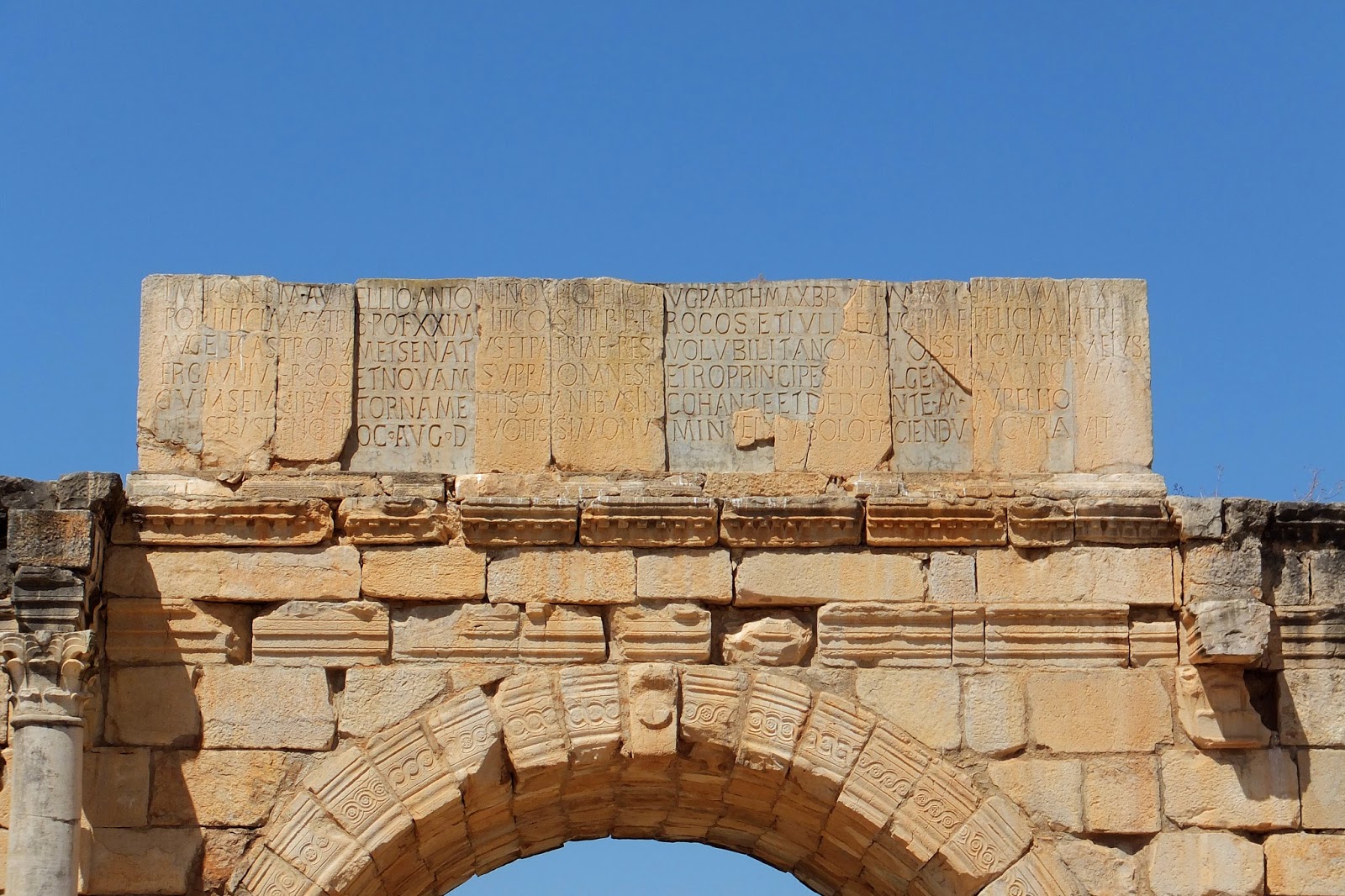Travel Date 4th July 2013
If you have read any of my earlier blogs you will notice that I like wandering around ancient places. Over the past ten years I have visited many ruins in many lands in Europe, Asia, the Middle East and the Americas. As an Australian, travelling from a land where a stone age civilisation is all that existed before Europeans arrived in 1788, the ruins of past civilisations fascinate me. Thus I make an effort to visit the remnants of those civilisations whenever I get the opportunity.
Entry was a paltry 10 dirhams. Volubilis was almost deserted. Compared to other major Roman ruins it is less well preserved and less spectacular than others such as Jerash, the Roman Forum and Colosseum, or Pompeii. Despite that I am glad I visited.
One feature that stands out is the number of floor mosaics which have somehow survived the ravages of time, earthquakes and vandals. This is one example, I will add several more as the closing pictures.
Wiki gives an excellent description and history of the site here: http://en.wikipedia.org/wiki/Volubilis
Briefly, Volubilis was originally a Phoenician and Carthaginian settlement from the 3rd century BC. It became a Roman town after the defeat of Carthage in the 2nd century BC and gradually became a rich and important town at the south-western extremity of the Roman Empire, with a population reaching over 20,000 by the 2nd century AD. Olives and trade were the primary sources of wealth. The Romans kept strong forces in the region because of often hostile Berber neighbours to the south and east.
The decay of the Roman Empire during the civil wars of the 3rd century AD weakened their control of far outposts like Volubilis and it fell to the local tribes. The population slowly decreased, with a resurgence in the 8th century when it became the local capital under Idriss I. He also established Moulay Idris nearby. After his death his son moved the capital to Fes and Volubilis became deserted.
Sadly, the disrepair of the site is not just from the ravages of time. Several earthquakes assisted, especially in the 18th century, but the worst destruction occurred in the 17th century when the local ruler used the site as a quarry to build Meknes, about 20km away.
French archaeologists started work on the site during the period of French rule. It is now a UNESCO World Heritage Site.
The ruins cover a large area and I spent a lot of my time wandering slowly in the heat around it all. I had planned wisely and brought a litre of water with me. There was probably water available at the restaurant and gift shops down the road from the entry, but there was none available on the site. To give an idea of the scale, this is the main road looking northeast, followed by a closer look at the gate:
This is the same road looking southwest and a closer look at that gate:
As I failed Latin in my third year of High School I'll leave it for others to translate the inscription, amazingly clear after two millennia:
While wandering around the site it was clear that there had been attempts in the past to turn it into a tourist destination. There is a hotel for tourists about a kilometre away, a café and souvenir shop a hundred meters down the hill from the entrance (too far to check them out in the heat) and what appears to be the disused remains of a sound and light show area near the northern entrance. Note the light poles near the NE entrance gate in the picture above.
I enjoyed the
peace and quiet. Apart from myself there were a couple who appeared to
be from Sweden, a small party of Americans who appeared to be on a bus
tour from Fes who left as I arrived, and a few workers who appeared
to spend most of the time sipping tea in the shade. I like being alone
in places like this, but I also felt sad that the Moroccan tourism
people seem to be missing an opportunity.
Later, when I saw
the opposite at Knossos, with long queues, hordes of tourists and Evans'
reconstructions, it occurred to me that maybe that missed opportunity
was not such a bad thing after all.
I
spent over three hours
wandering slowly around the site, taking photos or just sitting and
musing on life as it was two millennia ago and on the wonderful builders
of the Roman era. The murals were marvellous but very dusty. In one
spot someone had spilled some water that brought a corner of a mural to life. It was difficult to resist the temptation to do the same
myself, but I decided not to risk causing damage. In hindsight, looking
at my pictures below, I wish I had. The final one with the partial cleaning is
so much more vivid, making me wonder how bright the others would have been, and a little water was unlikely to add to the ravages of time.
I only had to wait twenty minutes for a Grand Taxi to arrive, depositing another visitor. You can't bargain very hard when it is 40C, there is no shade, and there is only one taxi, so the return fare to lunch in Moulay Idriss was 50 dirhams. I was happy to pay it.
Cheers, Alan
I only had to wait twenty minutes for a Grand Taxi to arrive, depositing another visitor. You can't bargain very hard when it is 40C, there is no shade, and there is only one taxi, so the return fare to lunch in Moulay Idriss was 50 dirhams. I was happy to pay it.
Cheers, Alan




























No comments:
Post a Comment